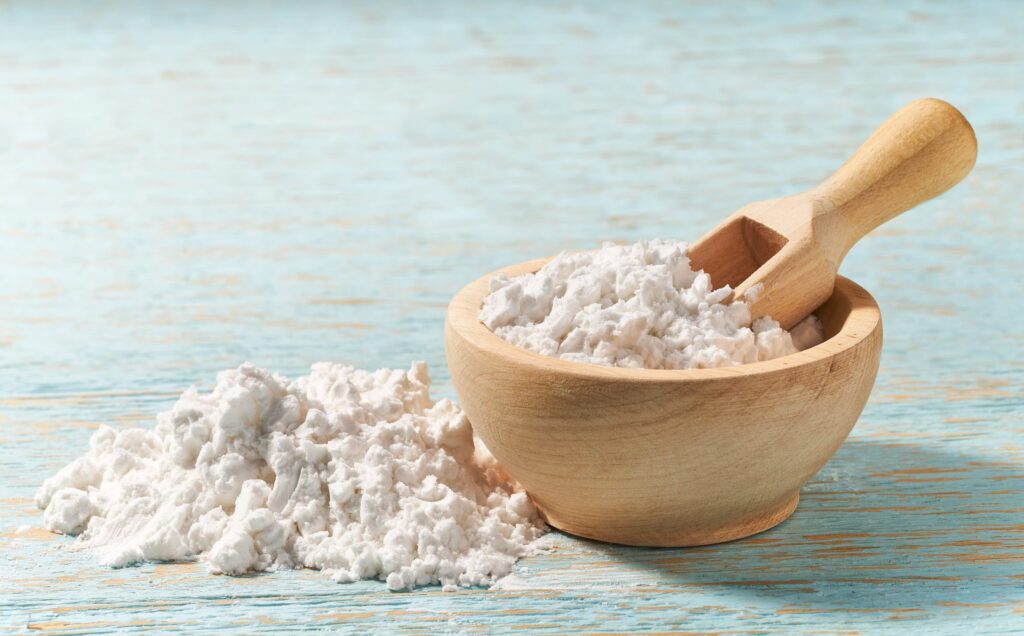Modified maize starch, a versatile food additive derived from corn, plays an essential role in the food industry. This starch, which undergoes physical, enzymatic, or chemical modifications, offers properties beyond what native starch can provide. Due to its unique functionality, modified maize starch is commonly used to improve texture, stability, and shelf-life in a wide array of food products. Here, we’ll delve into the uses, benefits, and safety considerations associated with modified maize starch in the food industry.
What is Modified Maize Starch?
Modified maize starch, or modified corn starch, is a type of starch obtained from maize (corn) that has been altered to enhance certain physical and chemical properties. Modifications can involve processes such as acid treatment, oxidation, cross-linking, or the use of enzymes. Unlike native corn starch, which has limited applications due to its solubility and stability constraints, modified maize starch exhibits improved functional properties, making it suitable for various industrial applications.
Common Uses of Modified Maize Starch in the Food Industry
- Thickening Agent
One of the primary uses of modified maize starch is as a thickener in soups, sauces, gravies, and salad dressings. Its high viscosity provides the desired consistency in both hot and cold food applications. Modified maize starch allows for a smooth texture without clumping, which is especially useful in convenience foods. - Stabilizer and Emulsifier
Modified maize starch helps stabilize emulsions, ensuring that ingredients like oils and water-based substances don’t separate. This property is highly valued in products like mayonnaise, salad dressings, and ice creams, where a consistent texture and appearance are essential. - Gelling Agent
Certain modifications enable maize starch to form gels, making it ideal for confectionery products, such as gummy candies, jellies, and marshmallows. Modified maize starch can also improve the setting and melting properties of gels, enhancing the sensory experience. - Moisture Retention
In baked goods, modified maize starch helps retain moisture, resulting in softer and fresher products with a longer shelf life. This moisture retention quality is advantageous in cakes, pastries, and bread, which are prone to drying out. - Improving Freeze-Thaw Stability
Foods that undergo freezing and thawing can suffer from texture degradation, often resulting in a watery or crumbly product. Modified maize starch is often added to frozen foods to improve their freeze-thaw stability, preserving texture and preventing separation or syneresis (water release) upon thawing. - Encapsulation
Modified maize starch is frequently used to encapsulate flavors and nutrients, protecting them from oxidation and degradation. This property is particularly beneficial in powdered products, where flavors and vitamins need to remain stable during storage.
Benefits of Using Modified Maize Starch
- Enhanced Functional Properties
Modified maize starch offers a range of enhanced properties, including improved solubility, heat resistance, and stability under acidic conditions. These qualities allow it to perform well in complex food systems, providing a more stable and versatile ingredient than native starch. - Improved Texture and Consistency
Modified maize starch provides smoothness and viscosity, creating a desirable mouthfeel in processed foods. This is particularly important in soups, sauces, and dairy products, where texture heavily influences consumer perception and satisfaction. - Extended Shelf-Life
By providing stability against various processing conditions (e.g., high temperature, acidity, and shear force), modified maize starch can help improve the shelf life of products. This extends freshness and improves quality during distribution and storage. - Increased Process Efficiency
Modified starch is often easier to process than native starch, due to its enhanced stability and resistance to breakdown. This improves the efficiency of manufacturing processes, as it reduces the need for additional additives or stabilizers. - Cost-Effectiveness
Modified maize starch is a relatively cost-effective solution for achieving desired textures and stabilizing complex food systems. Because it’s derived from a widely available crop, modified maize starch offers a cost-effective alternative to other thickening or stabilizing agents.
Safety and Regulatory Aspects
- General Safety Profile
Modified maize starch is generally recognized as safe (GRAS) by regulatory bodies such as the U.S. Food and Drug Administration (FDA) and the European Food Safety Authority (EFSA). Most modifications made to maize starch are non-toxic and do not alter its fundamental nutritional properties, making it safe for human consumption. - Digestibility and Allergenicity
Modified maize starch is usually well-digested by humans, as the modifications do not alter its carbohydrate structure in a way that hinders digestion. While maize starch is generally considered non-allergenic, individuals with corn allergies should still exercise caution. - Additive Considerations
In some cases, modified maize starch may contain added chemicals or processing aids. While these are typically used in trace amounts and considered safe, regulatory authorities have established maximum levels for certain additives. For instance, oxidized starch must contain only approved levels of residual chemicals. - Labeling Requirements
Many countries have specific labeling requirements for modified starches, especially if they have been genetically modified (GM). Consumers concerned about GM ingredients often look for labels indicating whether a product contains genetically modified organisms (GMOs), though not all modified maize starches are GM-based. Transparency in labeling helps consumers make informed choices.
Potential Concerns and Misconceptions
While modified maize starch is widely regarded as safe, there are some common misconceptions surrounding its use:
- “Chemically Altered” Misconception
Some consumers perceive modified starches as “unnatural” or harmful because they have undergone chemical changes. However, the modifications are generally minimal and carefully regulated to ensure consumer safety. In many cases, the term “modified” simply refers to physical or enzymatic changes rather than chemical additives. - Genetically Modified (GM) Concerns
Modified maize starch is not the same as genetically modified starch. However, if the source crop (corn) is genetically modified, the final product may be labeled as GM. Food manufacturers can address consumer concerns by using non-GMO corn sources if desired.
Conclusion
Modified maize starch is an essential ingredient in the food industry, providing functionalities that enhance texture, stability, and shelf life in a wide variety of products. With a favorable safety profile and extensive regulatory oversight, modified maize starch is a valuable tool for food manufacturers seeking efficient and cost-effective solutions. While some consumers may have concerns about its “modified” nature, understanding the benefits and safety regulations surrounding modified maize starch can reassure them of its place in a safe and modern food system.






